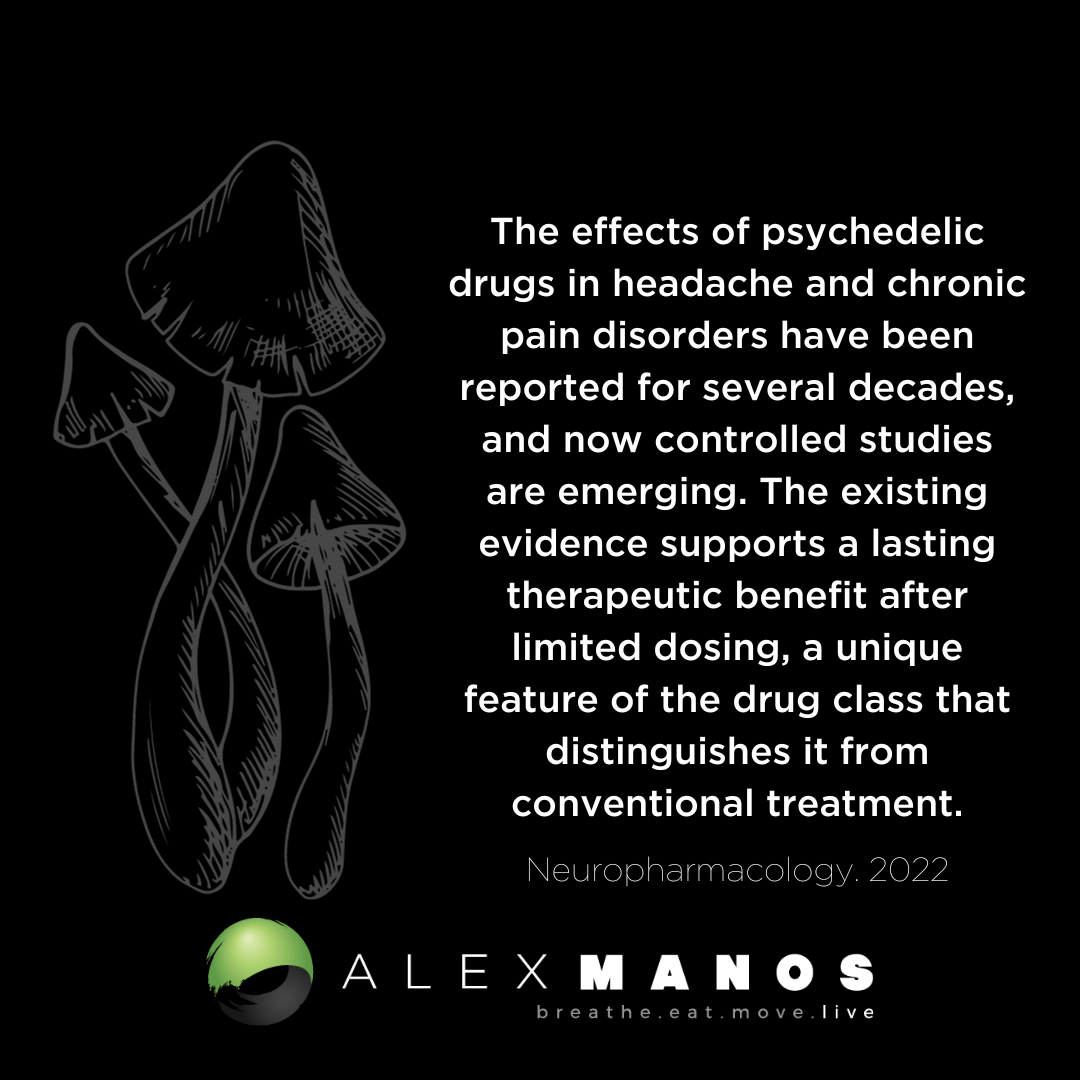Can Psychedelics Help With Chronic Pain?
In this blog I will discuss the potential therapeutic benefits of psychedelics in chronic pain conditions such as fibromyalgia. It is inspired by a paper entitled Chronic pain and psychedelics: a review and proposed mechanism of action.
Before we start, other blogs that you might be interested in, include:
- Psychedelics As Anti-Inflammatory Agents: A New Hope
- Psychedelics as a novel approach to treating autoimmune conditions
There were > 1000 clinical papers published on classic psychedelics, collectively involving approximately 40,000 patients between 1950 and the mid-1960s.
What Causes Chronic Pain?
In the above mentioned paper the authors explain that “the development of chronic pain is a complex mechanism that is still not fully understood. Multiple somatic and visceral afferent pain signals, when experienced over time, cause a strengthening of certain neural circuitry through peripheral and central sensitisation, resulting in the physical and emotional perceptual chronic pain experience.”
How Do Psychedelics Help With Pain?
The mind-altering qualities of psychedelics have been attributed, through serotonin 2A (5-HT2A) receptor agonism, to ’reset’ areas of functional connectivity in the brain that play prominent roles in many central neuropathic states.
Psychedelic substances have a generally favorable safety profile, especially when compared with opioid analgesics.
Clinical evidence to date for their use for chronic pain is limited; however:
several studies and reports over the past 50 years have shown potential analgesic benefit in cancer pain, phantom limb pain and cluster headache.
Psilocybin And Cluster Headaches
More recently, two retrospective cross-sectional surveys of patients with cluster headache showed that the use of hallucinogens such as LSD and psilocybin was associated with a reduction in headache severity and an extension of remission periods. Psilocybin was reported to be roughly as effective as high flow oxygen in aborting cluster headaches and was more effective than oral or intranasal triptan administration but less effective than triptan administration by the subcutaneous route. Psilocybin and LSD were also used to prevent cluster headaches and were evaluated by users to be more effective than conventional pharmaceutical agents including verapamil, prednisone, topiramate and melatonin.
Additionally, the use of hallucinogens for headache prevention was relatively infrequent compared with conventional pharmaceutical treatments, which typically require daily administration for this indication.
Conclusion
The transition from acute pain to chronic pain, especially in patients with neuropathic pain, has been shown to involve neuroplasticity or other changes in nervous system structure and function. These neuroplastic changes have been detected at multiple levels of the central nervous system, ranging from the spinal cord to the cortex.107 Given the accumulating evidence of altered brain FC in chronic pain states, the ability of psychedelics to disrupt established brain connection patterns is perhaps the most intriguing potential analgesic mechanism for psychedelics. Should this prove to be the case, combining psychedelics with more traditional therapeutic modalities could result in syner- gistic therapeutic benefits.
Given the current state of the opioid epidemic and limited efficacy of non-opioid analgesics, it is time to consider further research on psychedelics as analgesics in order to improve the lives of patients with chronic pain conditions.
References
- Psychedelic drug use in healthy individuals: A review of benefits, costs, and implications for drug policy: click here.
- Potential Therapeutic Effects of Psilocybin: click here.
- Chronic pain and psychedelics: a review and proposed mechanism of action
Alex is a certified Functional Medicine Practitioner (IFMCP) and has a MSc in Personalised Nutrition. He is also a breathwork facilitator with a background in personal training and massage therapy. He also runs The Resiliency Program - a 24 week program aimed at building physical, mental, emotional, and spiritual resilience.



